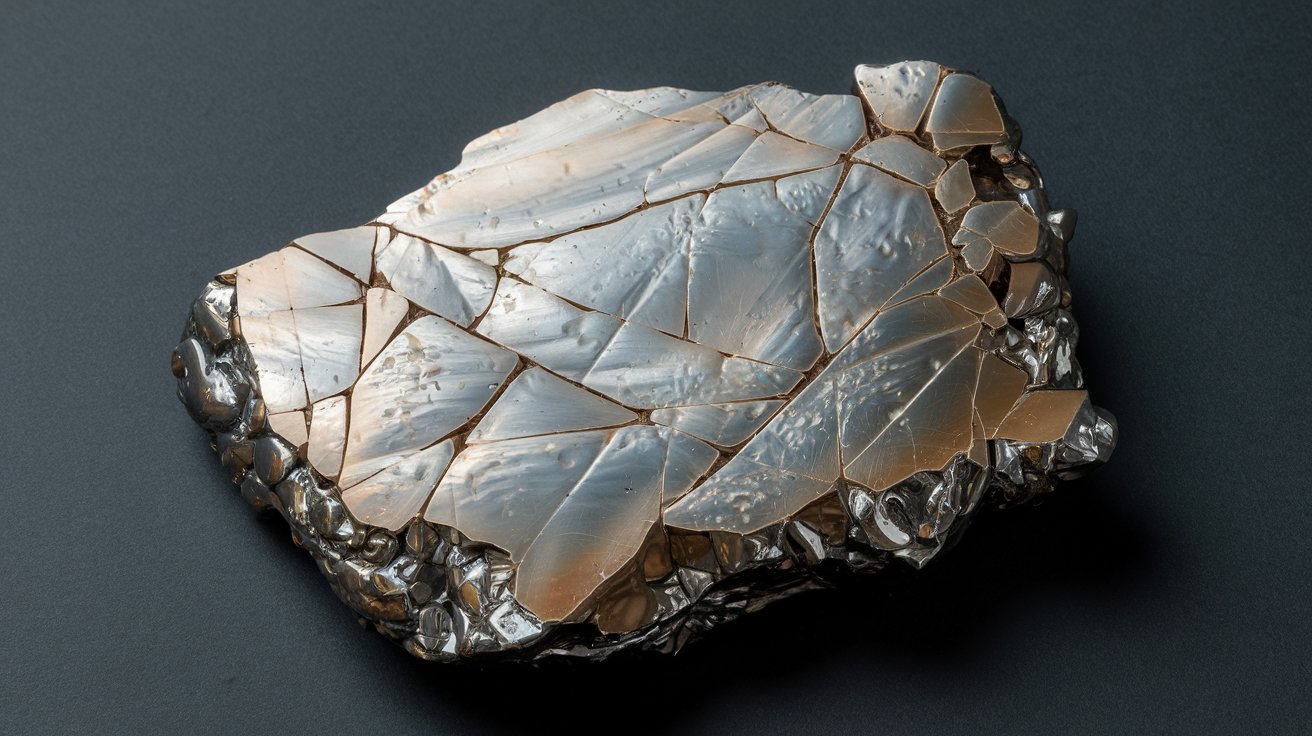
Aluminium Arsenide might sound like a mouthful, but it's a fascinating compound with some pretty cool uses. Ever wondered what makes your smartphone's screen so bright and clear? Aluminium Arsenide plays a role in that! This compound, often abbreviated as AlAs, is a semiconductor material that helps in the creation of high-speed electronic devices. It's not just limited to gadgets; it also finds applications in lasers and LEDs. Imagine a world without the vibrant lights of your favorite concert or the precise lasers used in medical surgeries. All thanks to Aluminium Arsenide, these technologies are possible. Ready to dive into 35 intriguing facts about this amazing compound? Let's get started!
Key Takeaways:
- Aluminium Arsenide is a special semiconductor with a high melting point and is used in LEDs, solar cells, and high-frequency devices. It's important to handle it with caution due to its toxic nature.
- When working with Aluminium Arsenide, safety is crucial. It's toxic and requires protective gear, proper ventilation, and careful disposal. Always seek immediate medical attention if exposed to this material.
What is Aluminium Arsenide?
Aluminium Arsenide (AlAs) is a compound of aluminium and arsenic. It’s a semiconductor with unique properties, making it useful in various high-tech applications. Here are some intriguing facts about this fascinating material.
-
Chemical Formula: The chemical formula for Aluminium Arsenide is AlAs.
-
Crystal Structure: AlAs has a zinc blende crystal structure, similar to that of diamond.
-
Band Gap: It has a direct band gap of about 2.16 eV at room temperature, making it useful in optoelectronics.
-
Lattice Constant: The lattice constant of AlAs is approximately 5.6611 Å, which is very close to that of Gallium Arsenide (GaAs).
-
Melting Point: Aluminium Arsenide has a high melting point of around 1,740°C.
-
Thermal Conductivity: It has a thermal conductivity of about 0.9 W/cm·K, which is relatively high for semiconductors.
-
Electron Mobility: The electron mobility in AlAs is around 200 cm²/V·s, which is lower than that of GaAs.
-
Hole Mobility: Hole mobility in AlAs is approximately 10 cm²/V·s, indicating slower movement of positive charge carriers.
Uses of Aluminium Arsenide
Aluminium Arsenide finds applications in various fields due to its unique properties. Here are some of its uses:
-
Optoelectronics: AlAs is used in optoelectronic devices like LEDs and laser diodes.
-
High-Frequency Devices: It is employed in high-frequency and high-power electronic devices.
-
Heterostructures: AlAs is often used in combination with GaAs to create heterostructures for advanced electronic applications.
-
Quantum Wells: It is used in the formation of quantum wells, which are essential in modern semiconductor technology.
-
Superlattices: AlAs/GaAs superlattices are used to create materials with tailored electronic properties.
-
Photodetectors: It is used in photodetectors for detecting light in various applications.
-
Solar Cells: AlAs can be used in multi-junction solar cells to improve efficiency.
Physical Properties of Aluminium Arsenide
Understanding the physical properties of AlAs helps in its application in various technologies. Here are some key physical properties:
-
Density: The density of Aluminium Arsenide is about 3.72 g/cm³.
-
Refractive Index: It has a refractive index of around 3.0 at a wavelength of 1.55 µm.
-
Dielectric Constant: The static dielectric constant of AlAs is approximately 10.06.
-
Thermal Expansion: It has a thermal expansion coefficient of about 5.4 x 10⁻⁶ /°C.
-
Hardness: AlAs is relatively hard, with a Mohs hardness of around 5.
-
Elastic Modulus: The elastic modulus of AlAs is about 85 GPa.
-
Poisson's Ratio: It has a Poisson's ratio of approximately 0.31.
Chemical Properties of Aluminium Arsenide
Aluminium Arsenide exhibits interesting chemical properties that make it suitable for various applications. Here are some notable chemical properties:
-
Reactivity: AlAs is relatively stable but can react with acids to release arsine gas, which is toxic.
-
Oxidation: It can oxidize when exposed to air, forming a thin layer of aluminium oxide on the surface.
-
Solubility: AlAs is insoluble in water but can dissolve in acids.
-
Hydrolysis: It can undergo hydrolysis in the presence of moisture, leading to the formation of aluminium hydroxide and arsenic acid.
-
Etching: AlAs can be etched using various chemical solutions, which is useful in semiconductor fabrication.
-
Doping: It can be doped with other elements to modify its electrical properties.
Safety and Handling of Aluminium Arsenide
Handling Aluminium Arsenide requires caution due to its toxic components. Here are some safety considerations:
-
Toxicity: AlAs contains arsenic, which is highly toxic and carcinogenic.
-
Protective Gear: Handling AlAs requires protective gear, including gloves and masks.
-
Ventilation: Work with AlAs should be done in well-ventilated areas to avoid inhaling toxic fumes.
-
Disposal: Waste containing AlAs must be disposed of according to hazardous waste regulations.
-
Storage: AlAs should be stored in airtight containers to prevent oxidation and moisture exposure.
-
First Aid: In case of exposure, immediate medical attention is necessary due to the toxic nature of arsenic.
-
Regulations: Handling and disposal of AlAs are regulated by environmental and safety agencies to prevent contamination and health risks.
The Final Word on Aluminium Arsenide
Aluminium arsenide, a compound with unique properties, plays a crucial role in modern technology. Its semiconductor capabilities make it indispensable in electronics and optoelectronics. From LEDs to solar cells, this material's versatility is unmatched. Its ability to form heterostructures with other compounds like gallium arsenide opens doors to advanced applications.
Despite its benefits, handling aluminium arsenide requires caution due to its toxicity. Proper safety measures are essential when working with this compound. Understanding its properties and applications helps in harnessing its potential while minimizing risks.
In summary, aluminium arsenide stands out as a key player in the tech world. Its unique characteristics and wide range of uses make it a valuable asset. Whether in research or industry, this compound continues to drive innovation and technological advancements.
Frequently Asked Questions
Was this page helpful?
Our commitment to delivering trustworthy and engaging content is at the heart of what we do. Each fact on our site is contributed by real users like you, bringing a wealth of diverse insights and information. To ensure the highest standards of accuracy and reliability, our dedicated editors meticulously review each submission. This process guarantees that the facts we share are not only fascinating but also credible. Trust in our commitment to quality and authenticity as you explore and learn with us.


